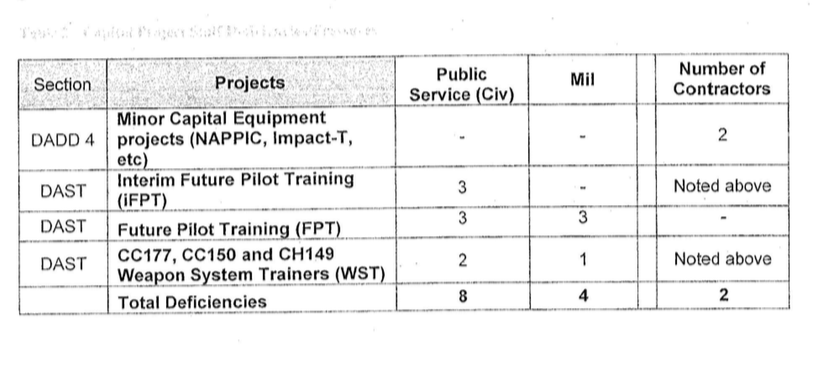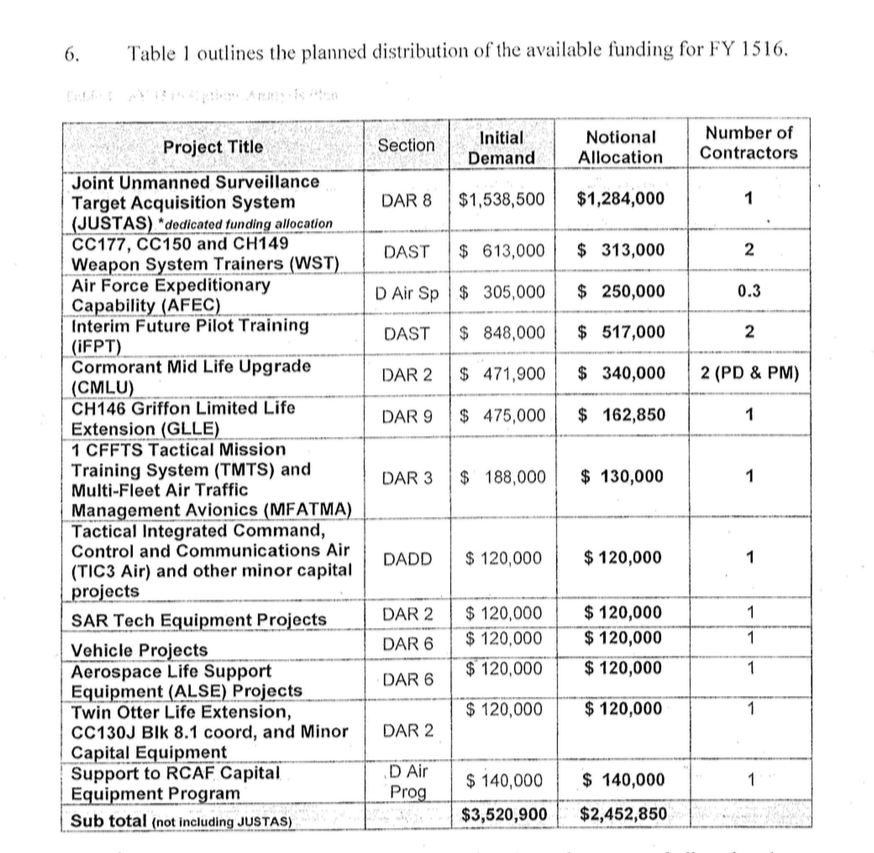The Canadian air force doesn’t have enough staff to handle procurement projects in their earliest stage, internal documents show.

According to a June 2015 briefing note for then-commander Yvan Blondin, the Royal Canadian Air Force is short 14 employees — four military, eight civilian, and two contract — to work on purchases that are in the first stage of development.

In fact, as a result of staff cuts that came when the air force contracted out pilot training and helicopter maintenance, “there is no staff capacity to support” work done on some projects in the options analysis phase, the note says.
The briefing note, obtained under access to information laws, says the air force’s ability to get procurement projects off the ground “is significantly limited by the human resources availability.”
“Human resource deficiencies are being encountered with Project Director staff, the availability of Project Management staff, and the limitation caused by central costing staff,” the note reads. “The use of short term contractors is small mitigation to the requirement for skilled military and public service staff.”
The air force and the government have faced criticism recently for failing to buy equipment on-time, which in turn costs taxpayers more money because of delay charges and added maintenance on aging fleets. In June, Canada finally received the first replacements for its 50-year-old fleet of Sea King helicopters in a procurement that spanned decades.
The briefing note says the staffing problem is exacerbated by the “increasing the scope of work that needs to be completed” before a project can get approval. The added workload comes as a result of recent changes to Canada’s procurement process, the note says.
Apparently in response, the University of Ottawa has begun offering courses on procurement tailored to defence employees.
The briefing note, which provided Blondin with a proposed funding breakdown, also says the projects are facing funding shortfalls.
Despite asking for $3,520,900 to fund the analysis of 12 projects, the projects received $2,452,850 — a difference of more than $1 million.

“Although the planned funding level remains above the approved allocation the risk is manageable to process,” the briefing note says, adding that the projects could get more money later in the year.
Those totals do not include funding for the project to replace Canada’s aging fighter jets, the briefing note says, because that project has its own office that receives direct funding from the air force’s main business office. Nor do the figures include more than $1.2 million allocated to a project to buy drones, according to the briefing note.
The air force, like other government departments, has recently faced funding cuts that have forced it to keep aircraft on the ground more frequently.
The note concludes by saying the air force will need to look at "further options" for fixing the staffing issues.
The air force did not respond to a request for comment before publication time, but we'll update this post when they get back to us.
